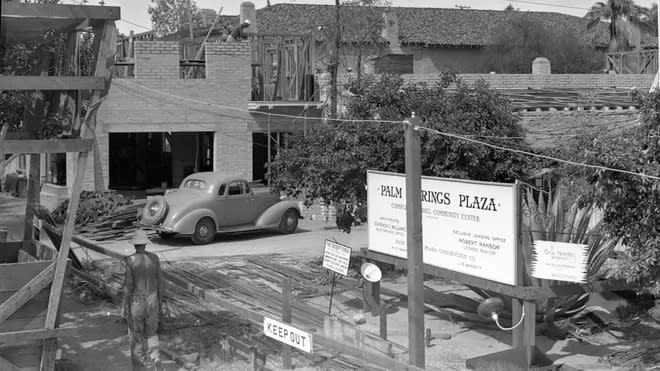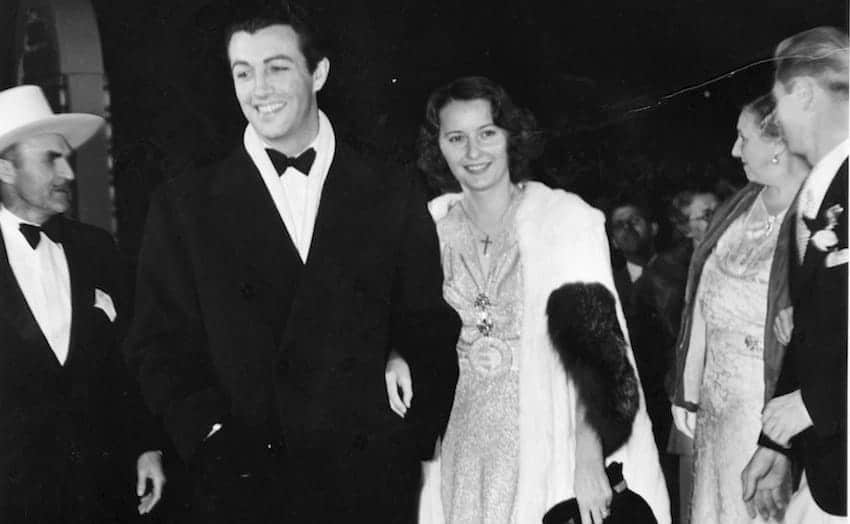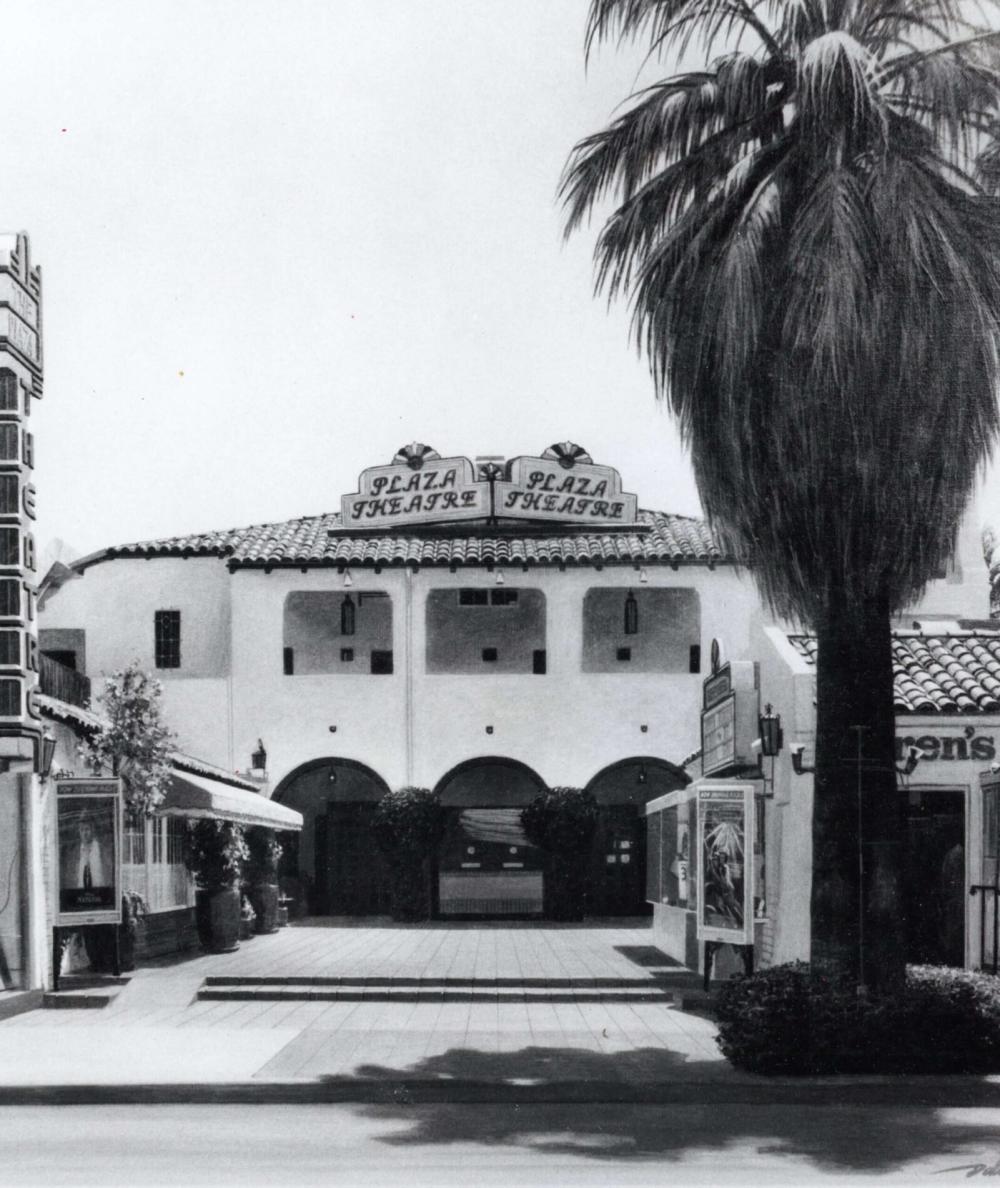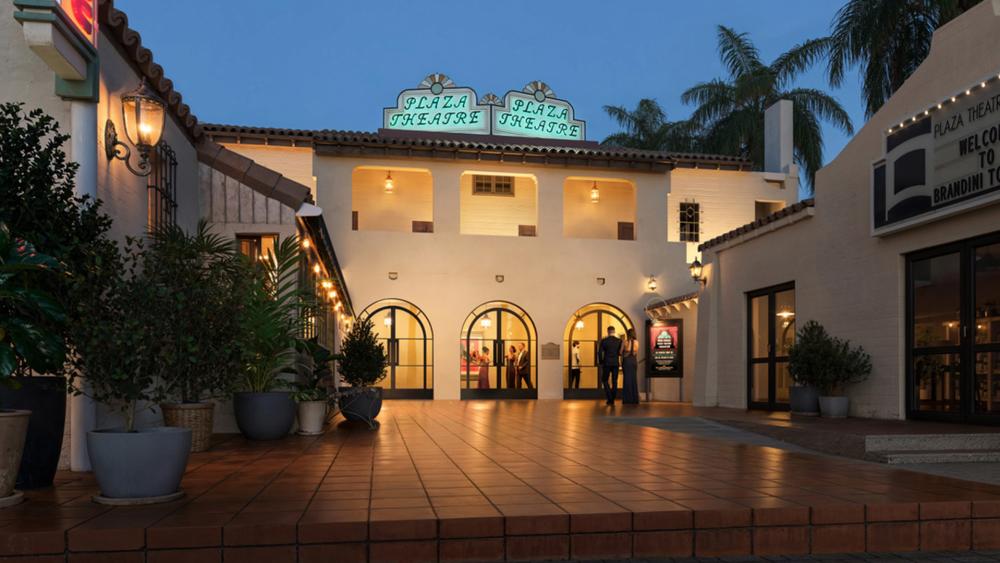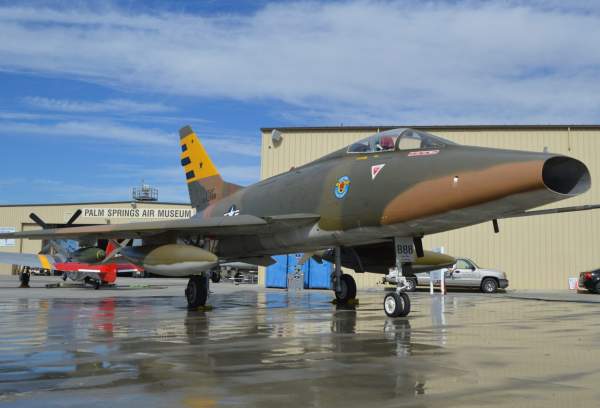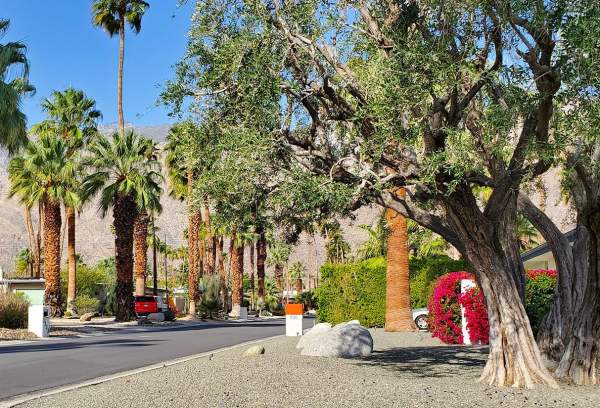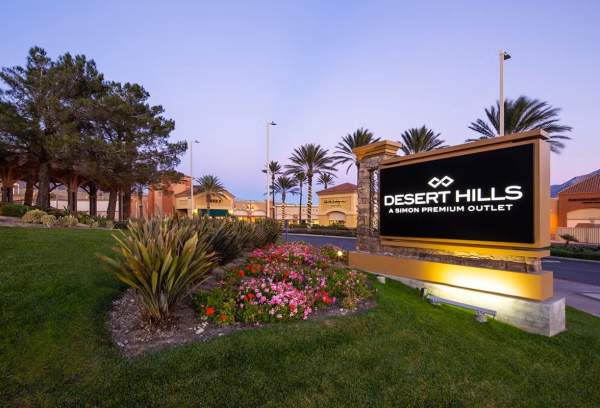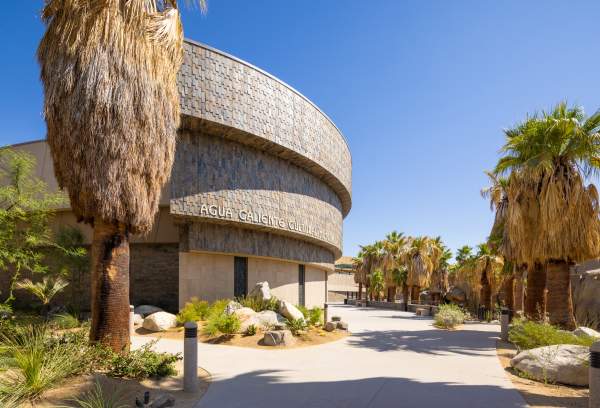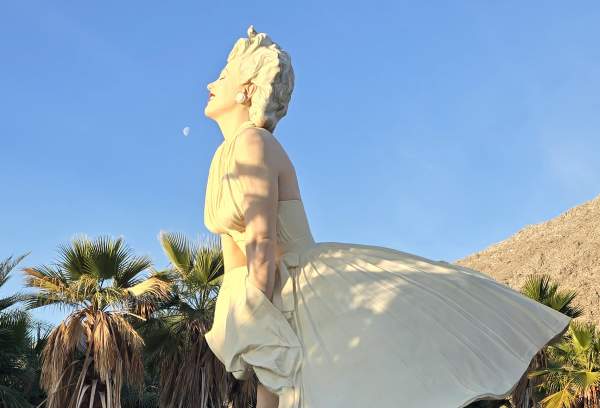The Vision of Julia Carnell
Julia Carnell, a philanthropist and part-owner of the National Cash Register Company, began visiting Palm Springs in the early 1930s, often staying at the Desert Inn operated by her close friend Nellie Coffman. In 1934, encouraged by local realtor Robert Ransom, Carnell purchased the site of the original First Community Church for $40,000. It became the location of her first project in Palm Springs—the Carnell Building (184–196 North Palm Canyon Drive).
She selected the Ohio-based architectural firm of Schenck & Williams, which she was already familiar with from NCR commissions in Dayton. This project also introduced architect Harry Williams to the desert, where he would eventually settle.
A Vision Comes To Life: The Birth of La Plaza in 1936
In the summer of 1936, construction began on Carnell Village and The Palm Springs Plaza—a $500,000 commercial and residential development that would transform downtown. Harry Williams sketched the initial concept on the back of an envelope. His sons, Roger and E. Stewart Williams, joined him in the desert to help realize the vision. E. Stewart Williams went on to design the Palm Springs Art Museum, the Mountain Station atop the Palm Springs Aerial Tramway, and many other local landmarks.
Julia’s son, Jefferson Patterson—later U.S. Ambassador to Norway—often joined her in the desert.
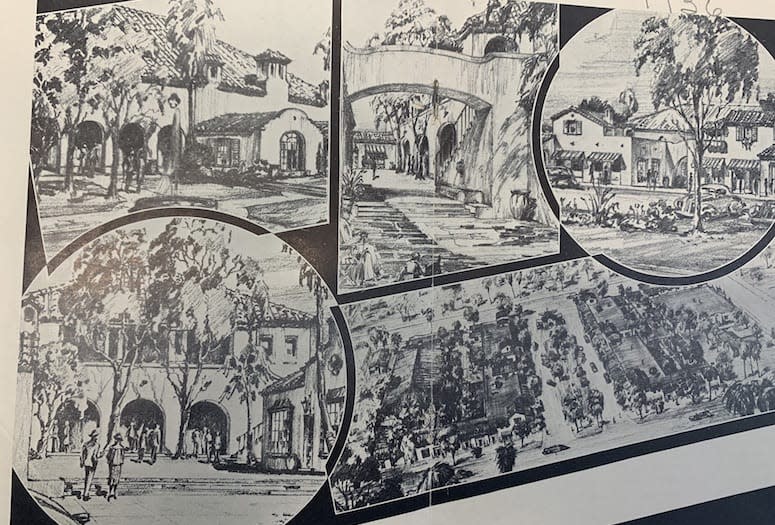
Farewell to Palm Springs' First Hotel
Among the most poignant moments in the Plaza's creation was the removal of one of the oldest standing buildings in the village, believed to be Palm Springs' first hotel. The modest home was originally built for Mrs. Brooks in the late 1800s and became a central part of early village life. It was later purchased by Dr. Welwood Murray, the community's first physician, and Judge John Guthrie McCallum, a key founder of Palm Springs. After Dr. Murray's passing, the home was acquired by Dr. F. M. White and her sister, Miss Cornelia White, who preserved it as their private residence. The property originally belonged to the Pablo and Marcus families of Indians, and the forefathers of Chief Willie Marcus of the local tribe.
The property on which the Plaza was built was purchased from Dr. F.M. White. It had a frontage of 400 feet on Palm Canyon Drive and 504 feet on Indian Canyon Drive (Indian Avenue at the time).
As the Plaza development expanded, the home, which had served as the on-site headquarters for the project's architects and builders, was carefully dismantled and moved in sections to the nearby Agua Caliente Indian Reservation (now Village Green). Max Ransom oversaw the relocation and ensured its historical contents were preserved. When it was dismantled, they found a copy of "The Press and Horticulturist" of Riverside dated April 23, 1892.
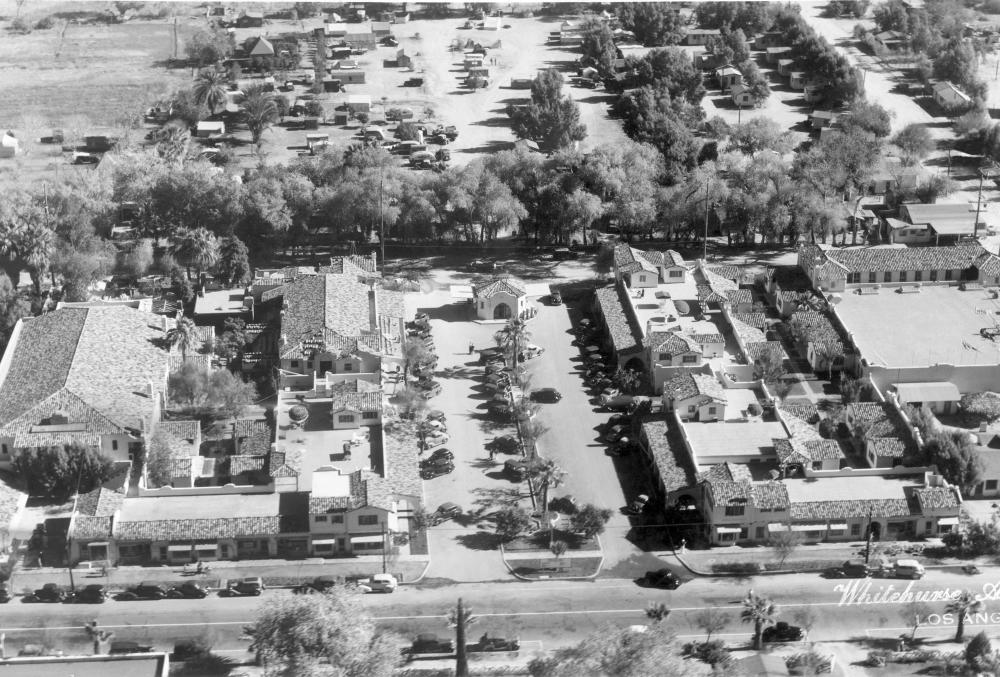
A Village Within a Village
Conceived as a self-contained, Mediterranean-inspired commercial and residential village, The Plaza featured:
A 140 wide pedestrian path connecting Palm Canyon Drive to Indian Canyon Drive
36 storefronts with apartments in the rear of each for lessees of the shops
A sprawling 115-car garage—the largest in Riverside County at the time, with 15 rooms for staff
A service station facing Indian Canyon Drive (now Tyler's Burgers)
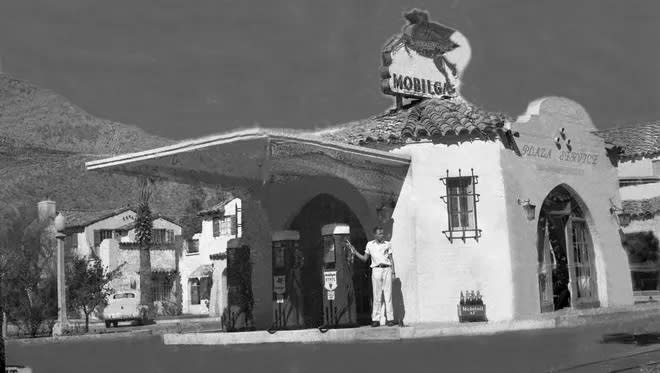
A 850-seat theatre
A two-story office building and pharmacy
A restaurant and sidewalk café with twin fountains
29 bungalow residences with vine-covered patios
A grocery store
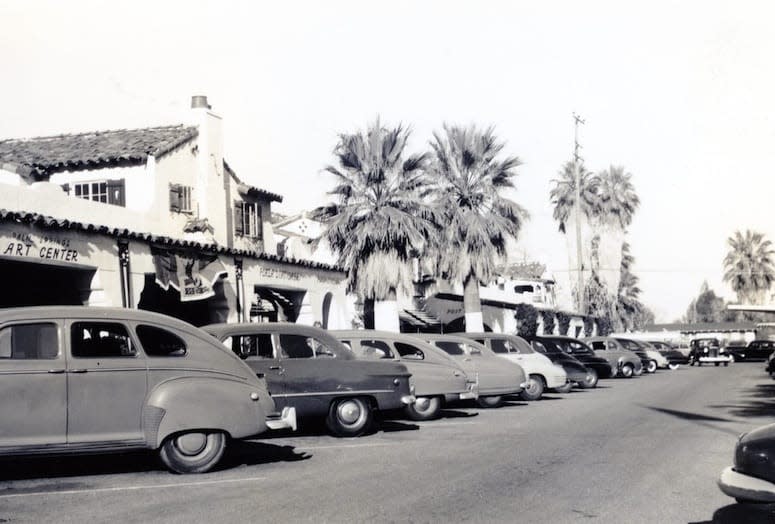
One of the first shops to open was Tweeds and Weeds, an importer of fabrics from England. Shop of Charm also opened for jewelry, antiques, Russian novelties, and Mary Kazhal for exclusive women's wear. Other retailers included Pocket Book Shop for leather goods, Alleine's Library, Plaza Pharmacy, Acoma Indian Shop offered authentic curios, Christine's Beauty Shop, Desert Cold Electric Shop, Plaza Cleaners, Fulton Markets, and Plaza Service Station.
Carl's Rendezvous restaurant touted itself as a place to dine and dance.
The Plaza Market offered groceries, liquors, fruits, vegetables, and a bakery.
More openings would follow almost daily through the fall. Desmond's department store (now Grand Central Station restaurant), occupying the largest commercial footprint at the Plaza's south end, was set to open on November 15. It was one of the oldest retail organizations in California, established in 1862.
Rapid Construction and Grand Opening
Despite intense summer heat, construction proceeded swiftly under contractor W.O. Warner. With 150–200 men working day and night, the Plaza was completed in just over three months. Landscape architect William C. Munchoff relocated mature trees to create shaded walkways and courtyards.
The Plaza officially opened on November 1, 1936, with a ribbon-cutting ceremony led by Nellie Coffman. Speakers included Dr. F.M. White, Cornelia White, Francis Crocker, and Katherine Fincy.
On Sunday afternoon, November 1, the Plaza was formally opened to the public. Beginning at 1:30 p.m., Mrs. Nellie N. Coffman, representing Palm Springs and honoring her friendship with Mrs. Carnell, cut the ribbon. At 1:30 p.m., a crowd gathered for music, community speeches, and the ceremonial launch of the Plaza's tree-lined promenade. Dr. White and her sister, Cornelia White, gave speeches, as did Francis Crocker (President of the Junior Chamber of Commerce and father of the Palm Springs tramway), and Katherine Fincy (Principal of the first Palm Springs school).
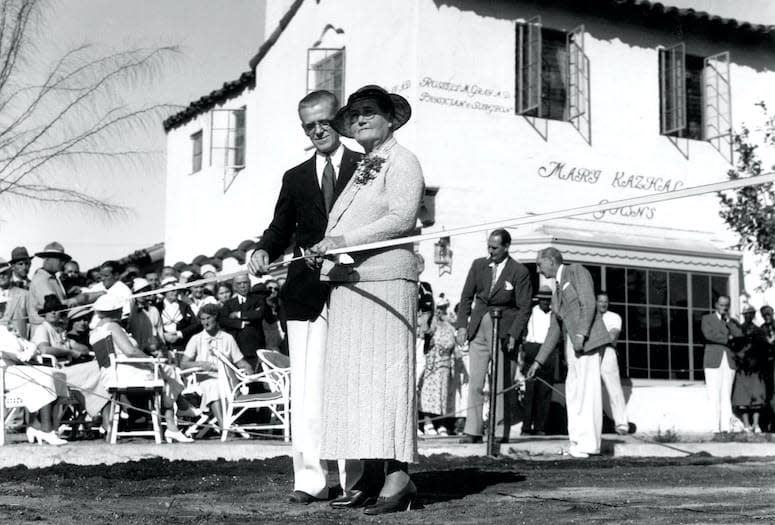
The Dazzling Premiere of the Plaza Theatre
A short stroll from the site of the old hotel, another kind of history was made in 1936 with the opening of the Plaza Theatre — a jewel of desert architecture and the centerpiece of the new Plaza. Its grand opening night was nothing short of legendary. The occasion? The world premiere of MGM's Camille, starring Greta Garbo and Robert Taylor.
It was a night Palm Springs would never forget. Beneath a canopy of stars and the glow of searchlights aimed at the San Jacinto Mountains, Hollywood's elite arrived by limousine. The likes of Shirley Temple, Amelia Earhart, Barbara Stanwyck, and Tyrone Power walked the roped-off red carpet as flashbulbs exploded and reporters from Time, Fortune, Esquire, and the Los Angeles Times took notes.
This was more than a movie premiere; it was a cultural milestone. MGM distributed news stories and photographs from the event to more than 265 newspapers nationwide. Wire services like the Associated Press and Universal News carried the story globally. Palm Springs, once a remote desert village, had arrived on the world stage.
The Plaza Theatre is now owned by the City of Palm Springs.
Palm Springs Art Museum
The Palm Springs Art Museum was founded in 1938 as the Palm Springs Desert Museum at La Plaza by Don Admiral, who rented a space for $120 a month. Natural science exhibits, Cahuilla Indian artifacts, and hiking excursions dominated the institution’s programming. The museum moved several times within the downtown Palm Springs area before building its first permanent structure in 1958, located on the southwest corner of Tahquitz-McCallum Way and Indian Ave.
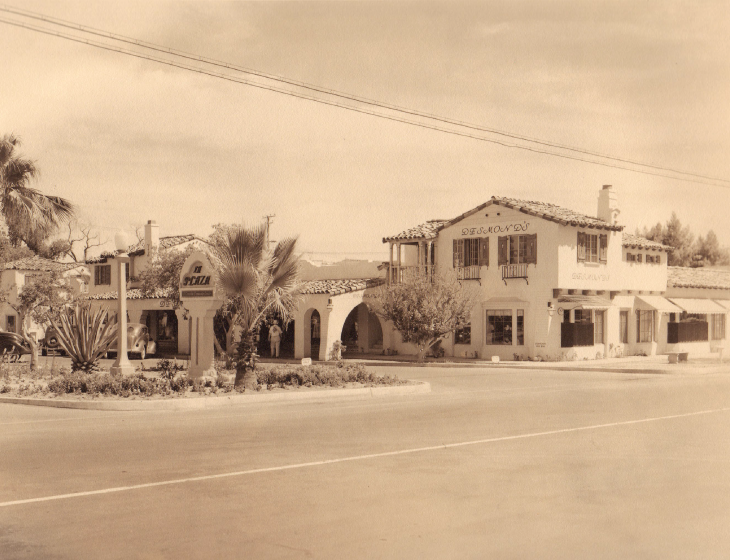
Ownership Transition and the Plaza Investment Corporation
Upon Julia Carnell’s death, her son, Jefferson Patterson, and the estate of Mary P. Davidson inherited the Plaza. In 1951, Frank Rusalem purchased the property after a bidding process. He later sold his share to Stanley Rosin, who formed the Plaza Investment Corporation along with Samuel Hirsch, Lou Dubin, and Harry Pitts. Other partners included Aaron Sternberg, H.J. Schwartz, and Mr. Roan.
Harry Pitts passed away in 1956, passing ownership to his son, Zachary Pitts, a prominent developer and civic leader. By 1958, ownership included Pitts, Esther Frank, the Sternberg brothers, and Rosin, who served as Vice President.
Preserving a Legacy: Larry Pitts and Historic Designation
Today, the Plaza remains under family stewardship. Larry Pitts, a third-generation caretaker, recalls the glamour days—Bob Hope strolling the Plaza, visits from Red Skelton, Robert Stack, and William Powell. Thanks to the Pitts family's dedication, La Plaza retains its historic charm.
Now officially designated a Class 1 Historic Site, La Plaza is a cornerstone of Palm Springs' cultural and architectural heritage.
A Future Rooted in History
In 2025, the fully restored Plaza Theatre will reopen, offering a new generation the magic of live performances and classic cinema in a landmark that once welcomed the Golden Age of Hollywood.
Palm Springs may grow and evolve, but La Plaza remains a timeless reminder of its past—built from dreams, desert light, and the determination of those who believed in the future of this sun-soaked oasis.
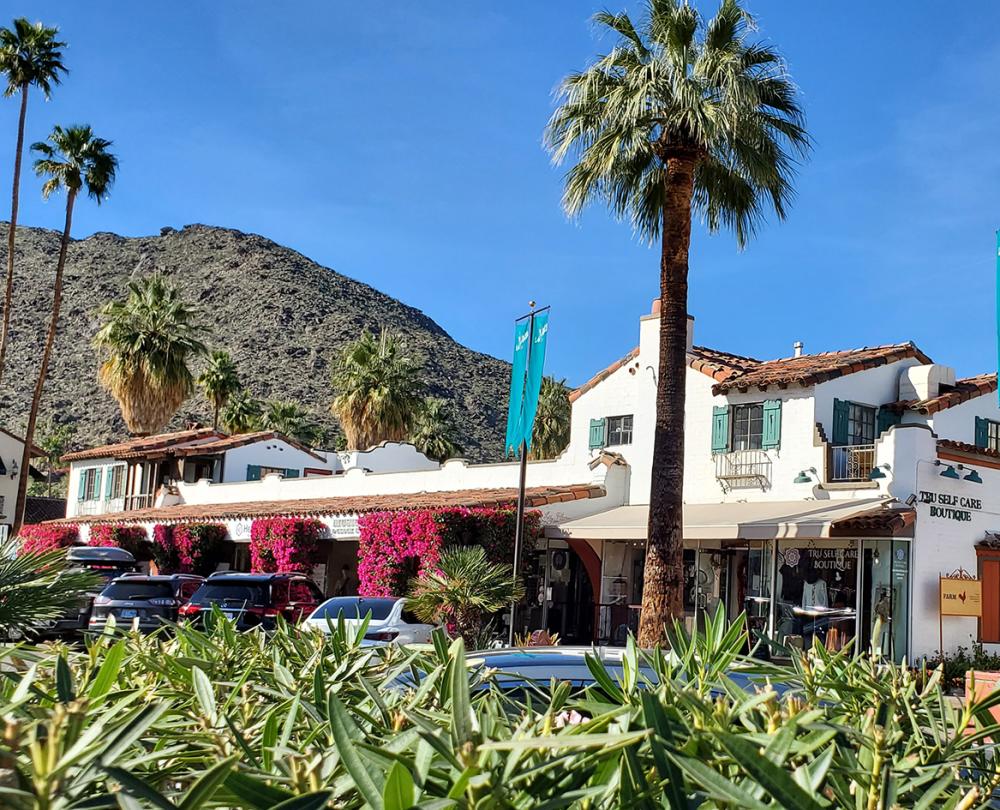
Directory
| Acai Oasis 760-219-1986 144 S Palm Canyon Dr |
Bill’s Pizza 760-325-5571 119 S Indian Canyon Dr |
| Casa Blanca 760-325-9464 140 S Palm Canyon Dr |
Farm 760-322-2724 6 La Plaza, |
| The Front Porch 760-322-2724 117 La Plaza |
Grand Central Palm Springs 760-699-7185 160 La Plaza |
| L'Atelier Cafe 760-778-7895 129 La Plaza |
Tyler’s 760-325-2990 149 S Indian Canyon Dr |
| Birkenstock 760-323-1175 160-C S Palm Canyon Dr |
Bungalow 17 360-472-1426 17 La Plaza |
| Enso Hair Salon 760-864-1100 133 La Plaza |
Gallivant 760-808-8166 120 La Plaza |
| Hephaestus Jewelry 760-325-5395 132 La Plaza |
Imageville 760-476-9825 128 La Plaza |
| Jalama Wines 805-735-8937 119 La Plaza |
Jewelry Boutique and More 760-832-8437 134 La Plaza |
| La Plaza Shoe Repair 760-416-2202 128-B La Plaza |
Lovely Nails 760-325-3599 130 La Plaza |
| Luigi's Barbershop 760-864-9557 118 La Plaza |
Music Box & Clock Shoppe 760-322-6280 114 La Plaza |
| Thick As Thieves 760-832-8350 183 S Indian Canyon Dr |
White Llama 951-377-9013 111 La Plaza |
Step Back in Time: Discovering Palm Springs' Iconic Historic Hotels
Best Wine Tasting Spots in Palm Springs
Sunset Dining in Palm Springs
Palm Springs Air Museum: The World’s Largest Collection of Flyable WWI Aircraft
- 4 min read
The Palm Springs Air Museum is more than just a…
Explore Historic Deepwell Ranch Neighborhood: Self-Guided Bike Tour
- 8 min read
Deepwell Ranch Neighborhood History George Fitch, Editor of the San…
Desert Hills Premium Outlets Complete Guide
- 3 min read
Located in Cabazon, CA, just 20 minutes west of Palm Springs, Desert…
Section 14: The Untold Story of Palm Springs' Heart and Heritage
- 14 min read
A Story of Community, Resilience, and Renewal on Tribal Land What Was…
How Bruno Bernard Helped Launch Marilyn Monroe
- 4 min read
The Untold Story of How Palm Springs and a Glamour Photographer Changed…
